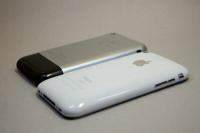Convert Word to JPEG
To save individual Word pages, you could of course take a screenshot with the "Print" button (complete screen) or the key combination "Alt Gr" + "Print" (only the selected window) and then save it as a JPEG file with an image editing program. However, you would have to cut out each individual screenshot individually, which would be very time-consuming with many pages - therefore, you can use various additional programs that are not only useful for converting to JPEG format are.
Direct conversion of Word documents with the PDFCreator
Regardless of yours Word-Version and your other programs, you can create a JPEG file from a document by using the free program "PDFCreator"use which on your PC is a virtual printer and gives you the opportunity to save all printable files as, for example PDF- or save image file:
- To do this, download the freeware onto your computer down.
- Then carry out the installation as usual. When selecting the components, you can do without "PDFArchitekt" if you are already using another PDF reader such as Adobe Acrobat. In addition, the Babylon Toolbar would also be installed after installing the program. If you want to prevent this, you have to click on "Decline" at the bottom right.
- Then start your Word version and open the desired document, for which you can use the key combination Ctrl + O.
- Depending on which version you are using, you have to click on "File" or the Windows-Click the button and select "Print". Alternatively, Ctrl + P would be the appropriate keyboard shortcut.
- Now select the entry "PDFCreator" instead of your standard printer and then click on "Print".
- Wait a short moment until PDFCreator has started. If you want to adjust the image quality of the JPEG file, call the at the bottom center Open "Settings", switch to "Formal" to "JPEG", adjust the appropriate settings at (e.g. B. the resolution) and save it with "Save".
- Now continue at the bottom right with "Save".
- Define the storage location, enter a file name for the image file and under "File type" select the entry "JPEG files", which you will find in the upper area of the list.
- Finally, all you have to do is click on "Save" and wait a moment for the file to be created. This is then automatically opened by default with the program that you have set for JPEG files, so by default up to Windows 7 the "Photo display" and from Windows 8 the app "photos".
If you want to convert one of your DOC files to JPG image format, you can do this ...
However, only the first page is saved as a JPEG file. If you would like to have the other pages also in this image format, you would have to select the respective in step 5 Specify the page which is to be printed - for example, only page 2, then page 3 in the next storage process etc.
Use the GIMP to save JPEG files
Alternatively, you could use an image editing program such as "GIMP"use to create your JPEG files. GIMP supports importing PDF files, so all you have to do is convert your Word document:
- To do this, open Word and the relevant document.
- If you are using Word 2007 or Word 2010, you can create a PDF document directly by setting the file type "PDF" via "Save as". With earlier versions you would either have to use a PDF creation program such as PDFCreator or an Internet service such as Word to PDF to use.
- Now start GIMP, press Ctrl + O and select the created PDF file. If you cannot find it in the appropriate folder, you would have to select the first entry "All files" at the bottom right instead of "All images".
- If you want to use each page as a separate picture, you must specify the setting "Pictures" for "Open pages as". Otherwise the individual pages would each be imported as a single layer.
- You can optionally adjust the other values, for example the resolution and the width or Height.
- Then click on "Import".
- If necessary, edit your imported pages.
- Now click on "Export" under "File", select "JPEG image" in the lower left under "File type", click on "Export", set the desired quality and finally click on again "Export".
If you want the PDF file as "pictures"you would have to repeat step 8 for each individual page. With the "Layers" import option, you only saved the first page as a JPEG file in step 8, since only the first layer was exported. To export the following page, click on the right next to "Layers" on the eye to the left of the first page so that it is no longer displayed, and then continue with step 8. You would then have to repeat this for the following page, i.e. the first two levels for page 3



